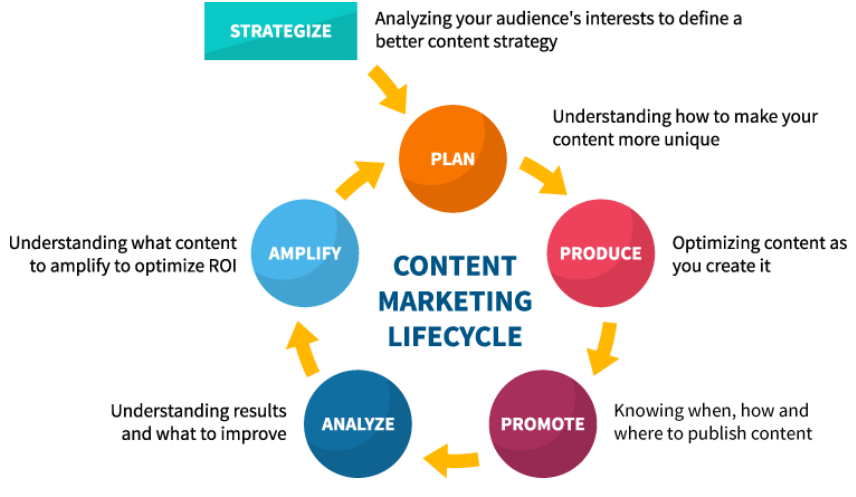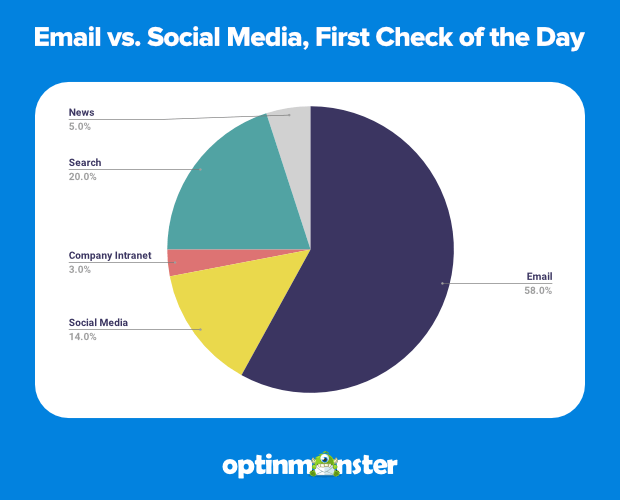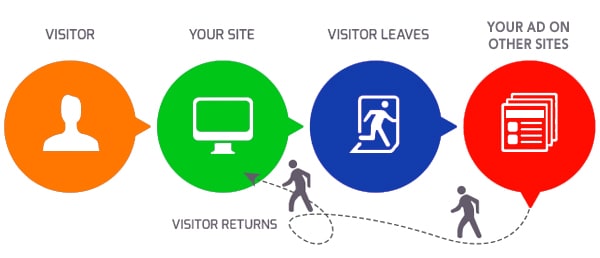If you want your business to succeed online, you need to have a website marketing strategy. A website is a great marketing tool that represents your business on the Internet, and it’s important to use all the digital marketing channels available to get more traffic and make more sales. The 10 steps in this post will help you successfully promote your website online.
What is website marketing?
Website marketing is all about promoting your website on the internet so that more people can visit it. This is just one of the many online marketing channels that you can use to reach your target market and achieve your business goals. The main goal of website marketing is to increase traffic to your website, so make sure you design a campaign that will achieve this goal.
Why do you need to have a website marketing strategy?
A website marketing strategy is important to have because it allows you to plan your marketing efforts and track your progress. Without a strategy, you may not be.
As a Digital marketing manager, one of my key tasks is to help clients understand why it’s important to have a comprehensive website marketing strategy, and how they can make it work best for their business. By putting together a well-rounded plan that incorporates SEO, social media, and other
#1 – It’s not about SEO and Social Media anymore
A few years back when someone was talking about web marketing, marketers thought about SEO.
Later that perception changed and social media came into the picture it is very common today to associate digital marketing with social media and SEO.
As you can see from the diagram below, digital marketing has a lot more pillars including content marketing, mobile marketing, email marketing, and more. Social media and SEO are only part of the equation.

A well-planned digital marketing strategy will help you utilize all available channels for promoting your business online.
#2 – You need a strategy and a plan
If you don’t write down your web marketing strategy that includes what you want to achieve online and how to actually do it, then it’s like driving with your eyes closed.
By preparing a strategy together with a plan, you will know exactly which tools to use, how to use them, and what to expect as realistic results from each tool.
In addition, a plan makes it easier to communicate your goals within your business so that all departments are aligned with your strategy.
#3 – Do it before the competition
Sooner or later every business will get into the digital marketing game and things will become even tougher. To get ahead of the game, you should take your online promotion more seriously and the best place to start is by creating a web marketing strategy.
To market your website effectively on the internet, you need to use a variety of digital marketing techniques.
How to do website marketing?
Here are the 10 steps to follow for a successful website marketing strategy.
- Perform a website design review
- Optimize your website for SEO
- Optimize your website for social media
- Create a content marketing plan
- Promote your website on social media networks
- Use Paid Ads to reach more customers
- Utilize email marketing to engage with your audience
- Use remarketing to get users back to your website
- Keep your website and content up-to-date and move forward
- Measure, Analyze, rinse and repeat
1. Perform a website design review
The first step is to create a website that accurately represents your business. This is not directly related to the visual aspect of it (i.e. how it looks) but on the quality of the information provided.
Your website is the same as your shop window. It should look good on the outside and when customers enter your shop, everything should be organized and in place.
Before starting any campaigns, take some time and review your website and make sure that:
It has a simple hierarchical site structure – A good site structure helps both users and search engines navigate a website to easily find the information they need. As a rule of thumb, any page on your site should be accessible from the homepage in 3 clicks or less.
It’s user-friendly and functional – Evaluate your website’s friendliness using the principles of SEO-friendly web design and try to remove design elements that add complexity or are not needed.
It has accurate information about your company and products – Make sure that it provides users with everything they need to know about your company and products. Make use of visual elements to get the attention of your users.
It’s fast and mobile-friendly – The majority of your users will come from mobile devices so test your website on mobile and optimize the experience of the user in the best way possible.
To learn about website design, consider enrolling in a web design course. It’s a great way to learn the basics and improve your website design skills.
2. Optimize your website for SEO
The next step is to start thinking about your SEO strategy. A well-defined SEO plan will eventually increase your rankings and traffic from search engines.
SEO is the process of increasing your website’s visibility in search engines and it consists of a number of steps:
Technical SEO – Making sure that your website is free of crawl errors and other issues that might keep search engines from indexing your website properly.
On-Page SEO – Make your webpages SEO-friendly and your content easy to read by search engine crawlers.
SEO Content – Writing content that satisfies the user’s intent.
Off-Page SEO – Promoting your website for the purpose of getting high-quality links from other websites.
Local SEO – Optimizing your website for location-aware searches and for getting more clients to your brick-and-mortar store.
Besides the above standard SEO practices, you should also optimize your website for modern SEO like adding schema markup and optimizing your content for rich snippets.
Recommended reading
SEO checklist – use the checklist to completely optimize your website for SEO.
3. Optimize your website for social media
The next step is to optimize your website for social media. This is not the same as social media marketing (we’ll talk about this on step 5), but it has to do with:
- Having visual elements (images, video) on your website that can be shared on social media networks.
- Adding social media sharing buttons on the pages you want to be shared on social networks.
- Making sure that when a user clicks the share button (or shares your URL directly), the generated snippet is well-formatted. Adding the necessary open graph meta tags and using image sizes and formats supported by all major networks is recommended.
Many webmasters skip this step and it’s a mistake that can negatively affect your social media promotion efforts.
While it looks like it’s more technical and not marketing-related, it does play an important role. If your website does not allow users to share your content properly, don’t expect any social media exposure.
4. Create a content marketing plan
The next step in your website marketing plan is to design a content marketing strategy.

When you promote a website online, you essentially promote the content of your website and that’s why it is referred to as content marketing.
The main purpose of content marketing is to help you create the right type of content that will attract new users to your website and keep them engaged.
To create a good strategy, you first need to:
- Do your keyword research and find out which SEO keywords to target with your content.
- Perform competitor analysis and find out what is working for your competitors.
- Analyze Google search results to find out what type of content Google wants for your target keywords (length of content, images/video, etc.).
Once you have a list of topics/keywords you should then create a content marketing calendar to specify when each piece of content will be published, who will write it, and how it will be promoted after publication.
Companies that manage to have an ongoing content marketing campaign, have more chances of succeeding online than companies that publish content occasionally without a plan.
5. Promote your website on social media networks
Now that you have a constant flow of content being generated, the next step is to start promoting your website on different social networks.
Follow the steps below:
Create Business Accounts on Social Networks
Your first action is to create business pages in the social networks that are relevant to your business.
These are the networks that your potential customers might be using. The most common suspects are Facebook, Twitter, Instagram, Pinterest, and LinkedIn.
Complete your Social Profiles
Next, make sure that your business pages are properly configured and all information is properly filled in.
Link your website and social media pages
Then, add links to your social pages on your website (in the footer) and also add the relevant schema (this will help search engines associate your website and the business pages together).
Grow your social media following
Having a business page with no followers does not provide any benefits to your business.
You need to spend some time to find and connect with people that might be interested in your business and also influencers in your niche.
Read this to get started
How to gain followers on Facebook
Create a social media calendar
Social media success is based on the quality of your postings. You need to fetch your social media networks high-quality content on a regular basis. That’s the best way to get the attention of users and create an audience for your brand.
A good way to start is to create a social media calendar (the same way you did with step 4 above) and specify what type of content to publish and when.
6. Use Paid Ads to reach more customers
As soon as you get started with SEO and social media marketing, you’ll realize one thing. It takes time for SEO to work and to get a decent number of followers on social media organically.
This means that if you want results faster, you need to add one more ingredient to your website marketing and that is paid advertising.
With paid advertising, you can get targeted traffic fast and start making sales or conversions.
There are various advertising platforms you can use but the most common are:
Google Ads – Target people based on the search terms they use on Google or show your ads on other Google properties (YouTube, Gmail) and websites that participate in Google AdSense.
Facebook Paid Ads – Promote your Facebook page, social media postings, or ads to people using Facebook, Instagram, or Facebook messenger.
Both methods are very effective but you should be careful not to waste a lot of money on advertising without a return. Better start with a low budget and measure the effectiveness of your campaigns and add more money as long as there is a positive ROI.
7. Utilize email marketing to engage with your audience
One of the most effective sales channels is email. In fact, one of the goals of your website marketing campaign should be to grow your email list.
Having an active email list is a great way to get people back to your website, let them know of new content, or directly sell them a product. Make no mistake, email is not yet dead.

To make the most of your campaigns, follow these email marketing tips:
- Make it easy for users to subscribe to your list – add the newsletter sign-up box in places that are visible while users are browsing the website
- Give them incentives (like a free book, or free resources) – Freebies can make a big difference in how many people will sign up for your newsletter
- Keep your promises – if you promise weekly updates, make sure that you send an email with new tips on a weekly basis.
- Don’t abuse their trust – Users trust you with their email address and while you can use automation to send personalized mass emails don’t abuse their trust. Everyone’s inbox is already full of promotional emails so think about when it’s best to send them another one.
8. Use remarketing to get users back to your website
Do you know what is the rule of 7?
It’s a rather old marketing rule which states that a potential client should see or hear an ad (or message) at least 7 times before they’ll take an action to buy a product or service.
This is applicable to internet marketing as well. In website marketing terms, this means you need to get users to revisit your website a number of times before they proceed to the next step of your digital marketing funnel.
Publishing new content on a frequent basis and using social media marketing and email marketing are all great ways to achieve this but there is one more method that is highly effective and this is remarketing.

With remarketing you use advertising platforms (either Google Ads, Facebook, or even Twitter) to re-connect with people that visited your website at least once.
This has a number of advantages including more targeted traffic, lower advertising costs, and higher conversion rates.
9. Keep your website and content up-to-date and move forward
When you do website marketing, you should not forget two important things:
First: To keep your website up-to-date
This means upgrading your website software to the latest version, ensuring that your website is secure and that uses the latest technologies.
For example, as part of your strategy, you may consider accelerated mobile pages (AMP), which is the new HTML format supported by Google and other networks.
Second: To keep your content fresh and relevant
Besides publishing new content targeting specific keywords and increasing your organic reach, you also need to go back and audit your existing content.
As your website gets bigger and older, some of your content will become outdated and this is not good for users or search engines.
The first step of the process is to find thin content pages. These are pages that have no rankings, backlinks, or traffic.
Maybe the content on those pages is good but since they don’t rank for anything, they don’t offer any real value to your website. As part of the audit, you should decide to either:
- Update and republish them
- Remove them and redirect the URL to other related pages on your website
- Merge them with other pages
Related guide
How to find and fix thin content pages
The second step is to review your Google analytics and Google search console reports and find out which are the most popular pages of your website.
A page that has high rankings now does not mean that it will maintain those rankings forever. The competition is big and chances are that new pages are published on a daily basis targeting exactly the same topics.
To make sure that you will not lose your rankings, you need to review your top pages once every few months and ensure that the content is still relevant and up-to-date.
10. Measure, Analyze, Rinse and repeat
No marketing strategy is complete without proper monitoring. In the digital marketing world, everything can be measurable and analyzed so it’s important to have the right tools and metrics in place.
In the majority of cases, you can get the data you want from Google Analytics so you need to make sure that you have Google Analytics installed on your website and properly configured.
The most common goals of a website marketing campaign are to:
- Get traffic to your site
- Increase conversion (makes sales, get new email subscribers, etc.)
These goals should be tracked in Google Analytics and analyzed so that you can make the right decisions.
For example, if you notice that posts covering certain topics perform better than others, you should focus your marketing efforts on creating content that is around those topics.
Key Learnings
A website is a great marketing tool, there is no doubt about that.
Before starting a web marketing promotion campaign review your website and make sure that it represents your business. A good website is mobile-friendly, fast, and has a simple hierarchical structure.
Next, spend time on SEO. This is a critical success factor for any online marketing campaign. If you can get your SEO right and start ranking for keywords that matter for your business, everything else becomes easier.
While waiting for SEO to work, jump into social media marketing and paid advertising. These two channels can drive targeted traffic to your website faster than any other method.
When traffic starts to flow in, it’s time to think about your email marketing and remarketing strategies. Both channels can convert traffic into customers better than any other channel.
Last but not least, don’t forget to go back and review your website and content and ensure that it’s always up-to-date and relevant to satisfy the user intent.
